A complete radiant underfloor heating system brings an element of luxury to a cold house, especially in the winter months. All home heating systems must be safe as well as warm. This article will explain underfloor heating safety considerations in detail.
Underfloor heating systems have several safety benefits in comparison to other home heating choices. There should never be a risk of leakage or fumes and there are no exposed hot surfaces that risk burns to children or pets. Underfloor heating should always be professionally installed and inspected.
Understanding why underfloor heating is safe is vital to ensuring that people feel safe in your home. We will cover water and electric underfloor heating systems in turn.

6 Reasons Why Underfloor Heating is Considered Safe
Underfloor heating is safe because it is completely insulated and separated from anyone that will be using the system. It is installed underneath your flooring or behind the walls. This is also built with internal checks to ensure that the system cannot be dangerous to those using it.
Here are five other reasons why underfloor heating is generally considered safe.
- Because underfloor heating does not generate air flow or air currents, dust mites and their feces are not blown around the home. This means that allergy risks are reduced. Having less moisture in the environment also makes it harder for dust mites to live in the carpet fiber.
- Unlike radiators, there are no exposed super-hot surfaces that could cause burns even when the system is on full.
- There are no exposed sharp edges or small parts in the underfloor heating system that could cause a parent to be concerned about a child’s well-being. Radiators present these everyday hazards to your home. With underfloor heating, you avoid these hazards.
- In the case of electrical UFH, it is built using a cell system. As a result, moisture or a spark occurring in one of the cells will not affect any other panel. These cells will deactivate entirely rather than continue running when something goes wrong.
- With water-based UFH, there are leakage holes and gutters placed to prevent the water from sitting underneath your floors. Whilst leaks are of course concerning in a water-based underfloor heating system, there are several design factors in place which mean safety is optimised. Water-based systems have all their electronics, pumps, and elements outside the house.
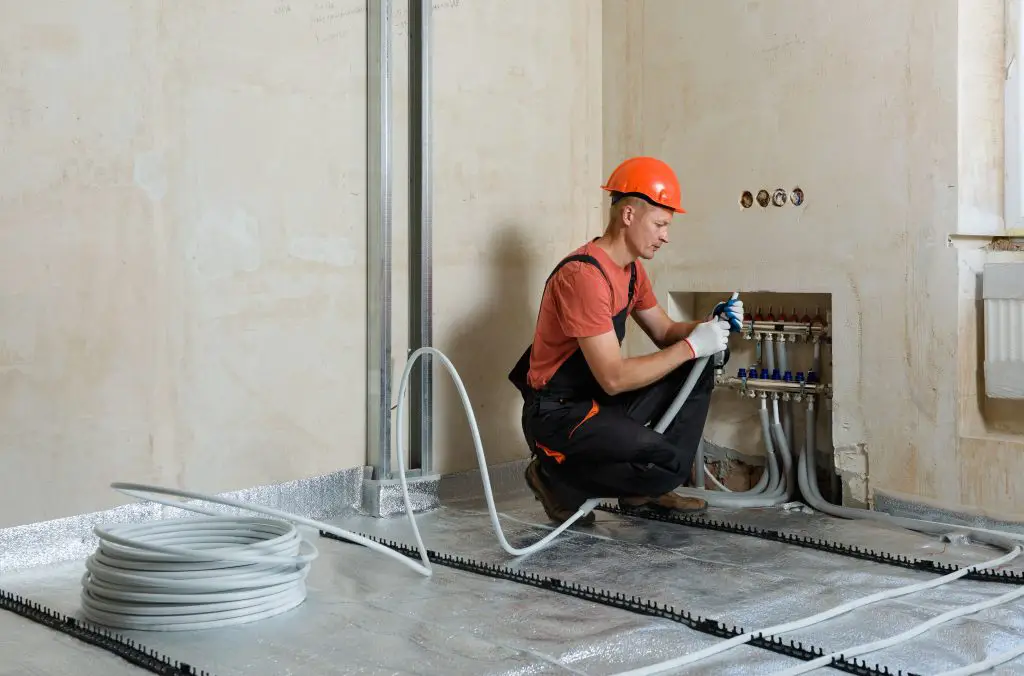
Safety of Underfloor Heating for Children and Pets
Underfloor heating systems offer a safer alternative to radiators, as it does not produce any hot surface that could cause burns. Additionally, the pipes are hidden safely under the floor, inaccessible by children or pets. This is not the case with exposed radiator pipes, which can be very hazardous when the heating system is on.
An underfloor heating system’s electrical or control box is also usually hidden. This is due to the fact that they are usually placed 4 to 5ft off the floor and they are securely fastened to the wall. Their installation looks clean and neat which makes them unnoticeable. In some cases, they are placed in an isolated room or outside of the house where children and pets don’t have access.
There is usually a limit as to how hot water in underfloor heating pipes can be—usually between 140 and 180 °F, which means you are not dealing with boiling water or superheated steam. Each individual room in your home can also be set at a specific temperature and controlled with accuracy and efficiency. Thus, the chances of water getting dangerously hot are highly unlikely.
Comparing Underfloor Heating with Radiators
Underfloor heating is a great alternative to traditional radiators. Unlike traditional radiators, underfloor heating does not overheat. Instead, it achieves the desired temperature you set by using a thermostat installed on the wall. Underfloor heating also distributes heat evenly throughout the room, unlike radiators which concentrate heat in one spot. The heat rises to the top of the room and may fluctuate when someone goes in and out of the room.
What are the dangers of underfloor heating?
There is remarkably little that can go wrong with underfloor heating that will cause danger to people’s health. The danger only comes from when the system is not installed properly. A big problem that used to occur with older underfloor heating was the system being too hot.
However, modern systems do not reach this temperature at all and can even keep mites, bugs, and mold from spreading in your home. This is because the systems actively kill mold and stop dust and mites from being released into the air.
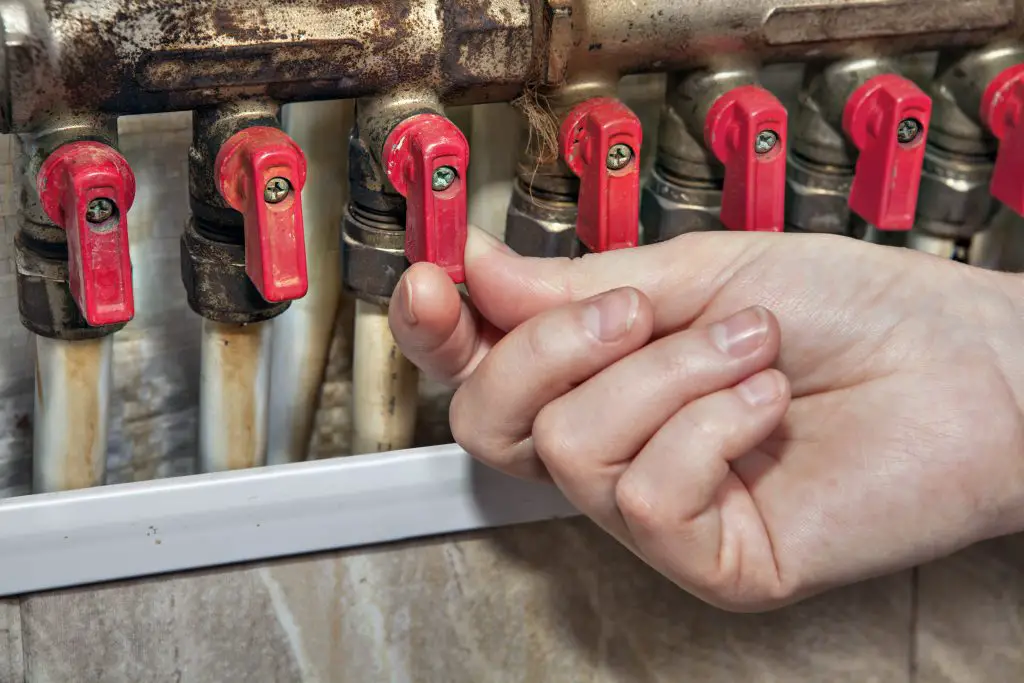
How does underfloor heating help with allergies?
To understand how heating solutions usually affect allergies, let’s consider the airflow through the home. Air should have the right level of humidity and moisture, not be excessively dry. It should also not be filled with tiny fast-moving dust particles.
Underfloor heating systems do not cause enough surface heat to dry the room’s air, nor do they comprise fans that blow fast-moving air through the home. This means that while the home is being heated, no dust is being kicked up, there is no moisture loss, and the air stays clean and easy to breathe.
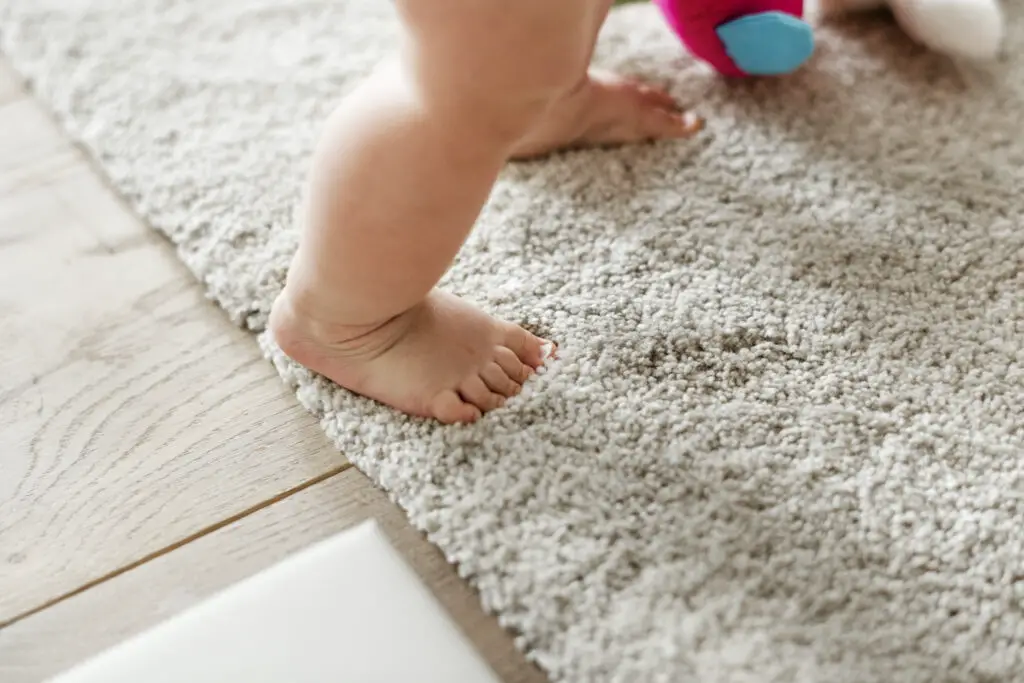
This is in stark contrast to many systems that recycle the air, like air conditioners or HVAC. These systems quickly start creating dirty and unbreathable air in your home.
When the air in the home is dirty, filled with particles, or moving dust, it aggravates those with allergies and asthma. The goal of a heating system used by those with sensitive lungs should be a reduction in mobile dust particles throughout the home.
You may find that some other heating systems are also suitable for those with allergies based on the airflow generated, with one of the biggest being pellet stoves that have low particulate flow. However, these systems usually need to be cleaned or maintained in ways that can cause those with allergies to be temporarily bothered.
Underfloor heating, once installed and working, does not need any frequent maintenance or cleaning, especially servicing that would exacerbate dust within the home.
Safety of Electric and Water-based Underfloor Heating systems
The two types of underfloor heating systems common throughout the world are specifically made to be safe no matter how they are used. This is why you will see that many homeowners that can afford it will prefer to install a combination of electric and water-based underfloor heating.
Both electric and water underfloor heating systems have their merits when it comes to safety, and understanding what they are and how you can use them to your full advantage will be vital to ensuring your home is always safe.
Electric underfloor heating
Electric underfloor heating works by having thin wires installed at floor level which generate heat when activated, warming the surface and providing heat. They come as electric floor heating mats which are perfect for adding floor heating that won’t require significant depth or extra space at all. The mats can be fitted to the floor before leveling and tiling, where they are ideally put over insulation or ‘backer board’.
While heating equipment is one of the leading causes of fires in America based on the report of NFPA issued last January 2021, it’s not the same case with electric underfloor heating.
Electric underfloor heating may seem like a safety hazard to some, however, modern systems are actually designed with safety features in mind.
Underfloor heating mats don’t need to reach a high temperature in order to be effective. In fact, the cable carrying the current doesn’t need to get very hot at all – it’s designed to only reach up to 40 degrees.
All the cables in the circuit are also protected with an outer jacket to make up for any electrical resistance that would cause them to generate too much heat.
Most electric wires have a PVC or fluoropolymer coating, both of which protect the wires from electricity and from being damaged by the environment. The cables are therefore said to be safe, even if the jacket surrounding them is compromised. These systems are also designed with a circuit breaker which automatically cuts the power to the cables whenever they detect a fault.
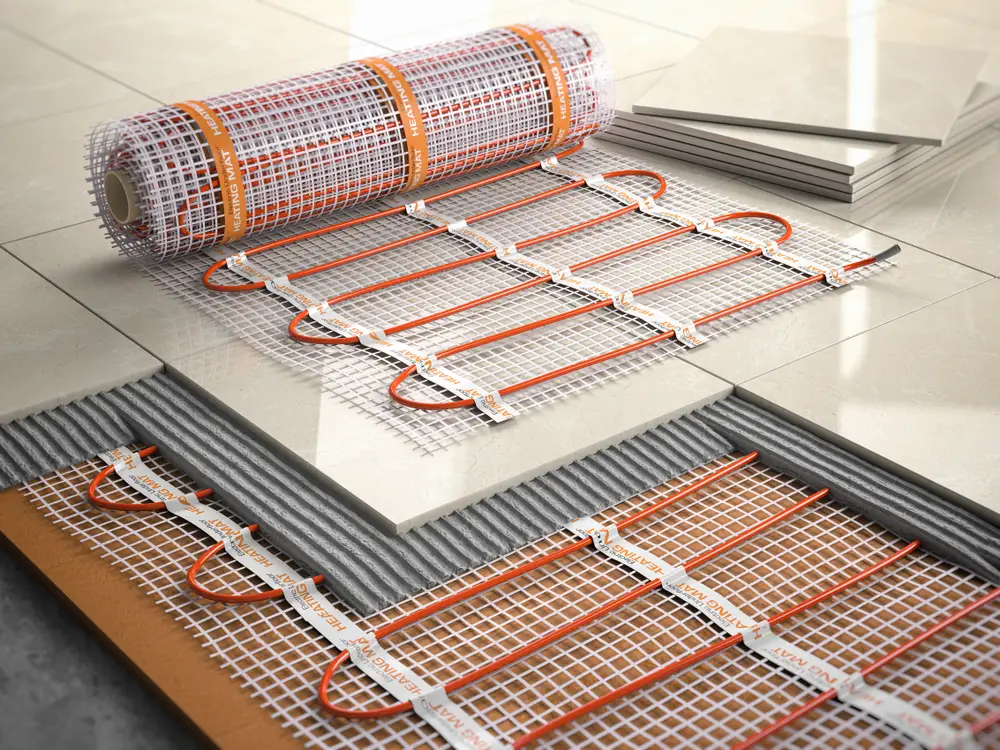
Water underfloor heating
Water underfloor heating systems are usually installed when a home is still being built. This is because the heating system needs to be installed into a plumbing and pipe system that circulates throughout the entire home.
A water-based underfloor heating system circulates heated water throughout the floor via pipes connected to a boiler system, much like radiator central heating. This type of underfloor heating system typically has a central boiler, in which water is heated to temperatures ranging between 140°F and 180°F (60°C and 83°C). It is then circulated through various coils positioned throughout the house.
The underfloor water pipes can also be connected to a solar water-heating system, or to an air-source or ground-source heat pump instead. A manifold will then connect the pipes to the heat source. If you need a larger system, expect to have more pipes and more complex manifolds.
A thermostat will also be attached to the system so that you can adjust the temperature. If you have multiple zones, each zone will need a dedicated thermostat.
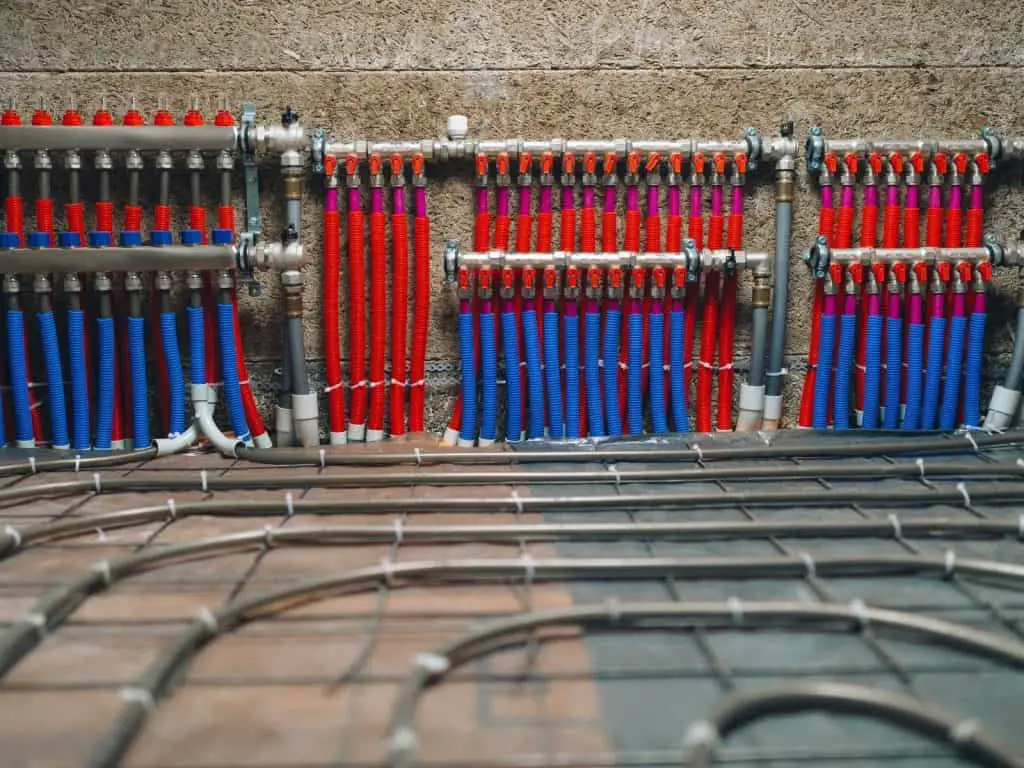
Although there are few associated risks with water-based underfloor heating, it is recommended that all plumbing work should be done by a professional. It is rare for a water underfloor heating pipe to fail due to a manufacturer’s default. In case this happens, it’s probably due to installation errors. A pressure test, performed at installation and on servicing by a professional is always recommended.
In case of a leak, which happens very rarely, this will be evident as the system will lose pressure, as shown by the gauges next to the manifold.
A damp area may also be visible on the subfloor where the water is leaking. If you don’t see changes with pressure but want to check for damages, you can use an infrared camera to detect exactly where the underfloor heating pipe is damaged. Alternatively, you can hire a professional or a company that offers thermal inspection services.
Here’s a brief summary of the two types of underfloor heating systems.
Comparison Between Electric and Water-Based Underfloor Heating Systems
| Factors | Electric | Water-Based |
| Installation Time | Quick installation usually takes less than an hour | Take longer to install |
| Project Type | Best for renovation projects | Recommended for new-build projects |
| Running Cost | Zoning is recommended to minimize electricity cost | Lower long-term running costs |
| Installation Costs | Cheaper | More expensive |
| Maintenance | Not required | Regular maintenance required |
Conclusion – Is Underfloor Heating Safe?
Underfloor heating is considered one of the safest heating systems in the world. It does not push air around the home, does not feature super-hot surfaces which risk burning children’s hands and the risks of leaks, fire or electrical hazards are vanishingly small.
A properly installed underfloor heating system is extremely safe to use, but you must ensure that it is adequately installed by a qualified professional and there should be a proper electrical certificate on installation. Water based systems, in particular, should be regularly serviced to ensure pressures are suitable.
Underfloor heating should provide lovely warm floor surfaces on which to walk, which is a lovely feeling when it’s cold outside in winter!
Lots more Underfloor Heating Information Here
- What Depth is Required for Underfloor Heating?
- Turning on Underfloor Heating for the First Time – How Long to Wait?
- Can you lay Vinyl flooring over underfloor heating?
- Do Tiles Crack With Underfloor Heating?
- Can You Heat a Whole House With Underfloor Heating?
- Can You Have Underfloor Heating Upstairs?
- Will Underfloor Heating Raise My Floor? – Underfloor Heating Layers Explained
- Can I put furniture on top of underfloor heating?
- How Do I Know If My Underfloor Heating is Leaking?
- Can You Combine Underfloor Heating With a Ground Source Heat Pump?
- Is Underfloor Heating Safe?
- Does Underfloor Heating Add Value to a Property?
- Can you have Wooden Floors with Underfloor Heating?
- Can Underfloor Heating Cause a Fire?
- What temperature should Underfloor Heating be set at?
- Can I Put a Rug Over Underfloor Heating?
- How Long Does it Take for Underfloor Heating to Warm Up?
- Why is my Underfloor Heating Noisy?
- Why is my Underfloor Heating Patchy?
- How do I know if My Underfloor Heating is Working? – Common Problems & Fixes
- What can go wrong with underfloor heating?
- Can you Combine Underfloor Heating with an Air Source Heat Pump?
- Do you keep underfloor heating on all the time?
- Does Underfloor Heating work with Smart Thermostats?
- Kitchen Underfloor Heating – Should Underfloor Heating go Under Kitchen Units?
- How much energy does Underfloor Heating use?
- Underfloor Heating in Summer and Winter
- Lifespan of Underfloor Heating
